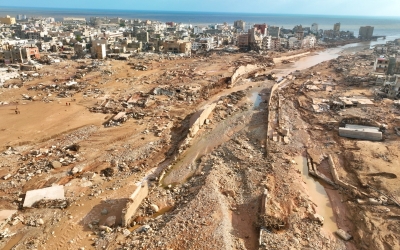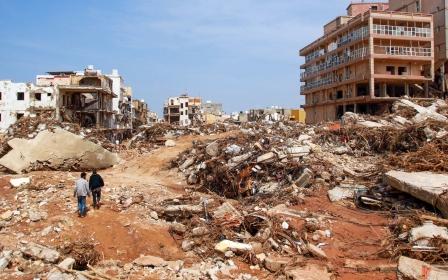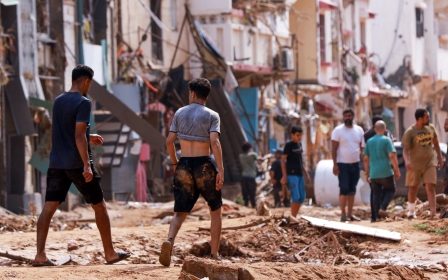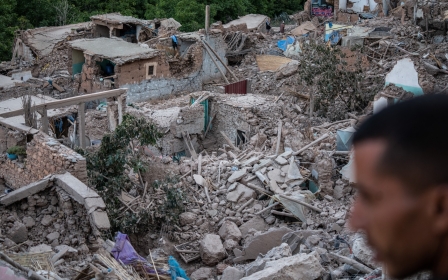Why did Libya floods result in such a large loss of life?
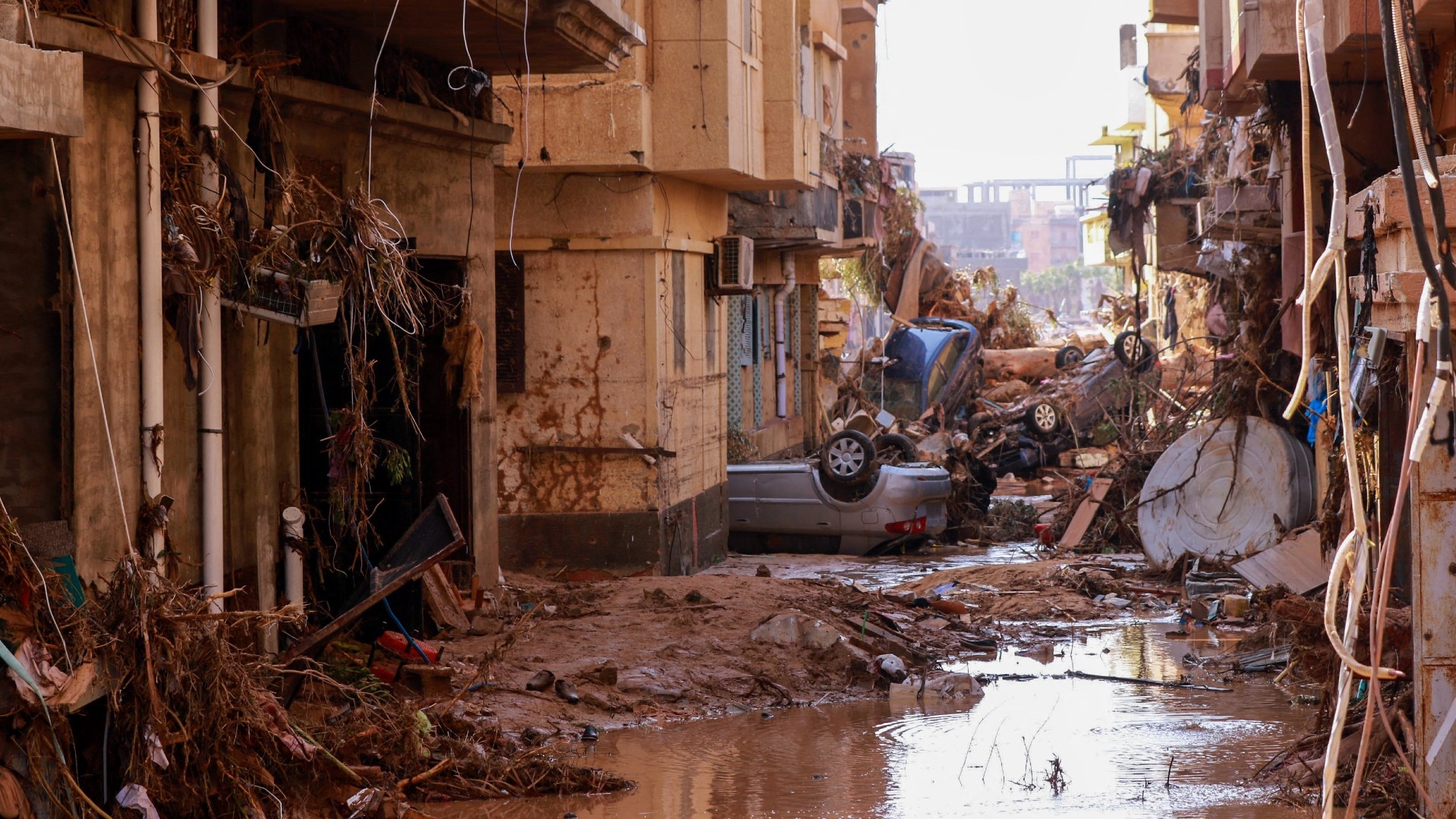
The full scale of the devastation caused by flash floods in Libya is still emerging three days after disaster hit the country's east.
At least 5,200 people died in Derna after two dams collapsed on Monday amid a tropical storm, unleashing floods down the Wadi Derna, a river running from eastern Libya's Green Mountains through the city and into the sea, and sweeping away entire neighbourhoods. Around 10,000 people are still missing.
Storm Daniel first broke on 4 September, sweeping across parts of southern Europe and the Mediterranean coast. At least 15 people were killed in Greece, seven in Turkey and four in Bulgaria.
The storm moved towards Libya late last week, reaching peaks of 70-80 km per hour on Sunday, the country's national meteorological centre said.
In the eastern city of al-Bayda, a new rainfall record of 414.1mm was set on Monday, according to the centre. In Derna, where the two dams collapsed, a local official said that 25 percent of the city had "disappeared".
New MEE newsletter: Jerusalem Dispatch
Sign up to get the latest insights and analysis on Israel-Palestine, alongside Turkey Unpacked and other MEE newsletters
Over a few days, the storm rapidly became one of the deadliest ever recorded in North Africa.
Experts and analysts told Middle East Eye that poor infrastructure and lack of planning contributed to the huge number of casualties.
Climate change was also likely to have intensified the storm, they said, and would lead to extreme weather events in the future.
Ailing infrastructure
Storm Daniel has been dubbed a "medicane", an informal term that describes a tropical cyclone-like storm formed in the Mediterranean Sea.
Medicanes tend to occur more frequently in western parts of the Mediterranean, rather than arid areas like Libya's coastline, according to Liz Stephens, professor in climate risks and resilience at the University of Reading.
As such, preparedness and resilience levels for rainfall events in arid climates tend to be low.
'If the dams were better maintained, it would have effectively reduced the devastation'
- Malak Altaeb, policy consultant
"While Greece has suffered from widespread flooding as a result of Storm Daniel, the tragic loss of life in Libya is largely due to the sudden failure of the dams, providing little time to find safety," Stephens told Middle East Eye.
"The dams would have held back the water initially, with their failure potentially releasing all the water in one go.
"The debris caught up in the floodwaters would have added to the destructive power."
A report by an academic at Omar Al-Mukhtar University in Libya published last year predicted that the Derna area had a high potential for flood risk, and its dams required frequent maintenance.
"Dams in Libya are in weak condition and maintenance is not a priority," Malak Altaeb, an independent consultant and researcher on environmental policy in the Middle East and North Africa (MENA), told MEE.
"If the dams were better maintained, it would have effectively reduced the devastation."
On Tuesday, a local official told local media that another dam in the eastern region, between Derna and Benghazi, was filled with water and on the brink of collapse.
Altaeb said Libya lacked the robust disaster preparedness, early warning systems, evacuation plans and well-maintained infrastructure needed to "mitigate the impact of storms and protect lives".
Libya has been in a state of unrest and instability since 2011, when a Nato-backed uprising toppled longtime ruler Muammar Gaddafi, leaving it deeply fractured and lacking a strong central government.
The country of seven million is divided between an internationally recognised government based in the capital Tripoli, and a separate administration ruling the disaster-hit east.
Lubna Yousef, a policy researcher on the MENA region and climate change, lays blame for the devastation of the storm on both of Libya's administrations.
"Evacuation plans, shelters, an understanding of the potential scale of infrastructure damage, and budget allocation for recovery were all sorely lacking by both governments," Yousef told MEE.
"While the storm served as the immediate catalyst, decades of state failure, poor governance, corruption and conflict exacerbated its impact."
She said that eastern Libya has long been allocated inadequate budgets for infrastructure developments and maintenance, even during the Gaddafi era before 2011.
"The storm also struck during the late hours, catching everyone off guard. People didn't anticipate the dam's failure and Libyans are unfamiliar with natural disasters of this intensity and scale," Yousef added.
"There were no resources for civilians to turn to for guidance."
Climate change effect
Global rising temperatures are likely to intensify the strength of storms such as Daniel, according to experts.
"While climate change is likely to lead to an overall decrease in the number of cyclones in the Mediterranean, the storms that do form are likely to be stronger, with more intense rainfall," Stephens said.
"It would be interesting to evaluate whether, like 40 degree temperatures in the UK, the rainfall totals in eastern Libya would have been physically implausible without climate change."
'The MENA region is indeed one of the most vulnerable to climate change'
- Lubna Yousef, researcher
She said that such a question would be complex to determine, and would need to take into consideration changes in storm track and rainfall levels.
A report published by a group of international scientists in September 2022 identified the eastern Mediterranean and the Middle East as a climate change hot spot, where global warming is almost twice as fast the global average.
Such warming would lead to heatwaves, dust storms and torrential rains, among other extreme weather events, with "potentially disruptive societal impacts", the study finds.
"The MENA region is indeed one of the most vulnerable to climate change and we're already seeing the impact," Yousef said.
"Places like Bahrain are considered one of the most water-stressed in the Gulf, while others, like Iran, are headed towards a humanitarian disaster due to their poor water management."
She said that the situation called for a cooperative approach in the region, where climate-related challenges "cross borders".
"Libyan and international authorities must implement effective mitigation and adaptation strategies to be better prepared for future events," said Altaeb.
"Regional coordination is important in the aftermath of huge climate change impacts and natural disasters to address transboundary climate impacts and share knowledge and resources."
Middle East Eye delivers independent and unrivalled coverage and analysis of the Middle East, North Africa and beyond. To learn more about republishing this content and the associated fees, please fill out this form. More about MEE can be found here.


